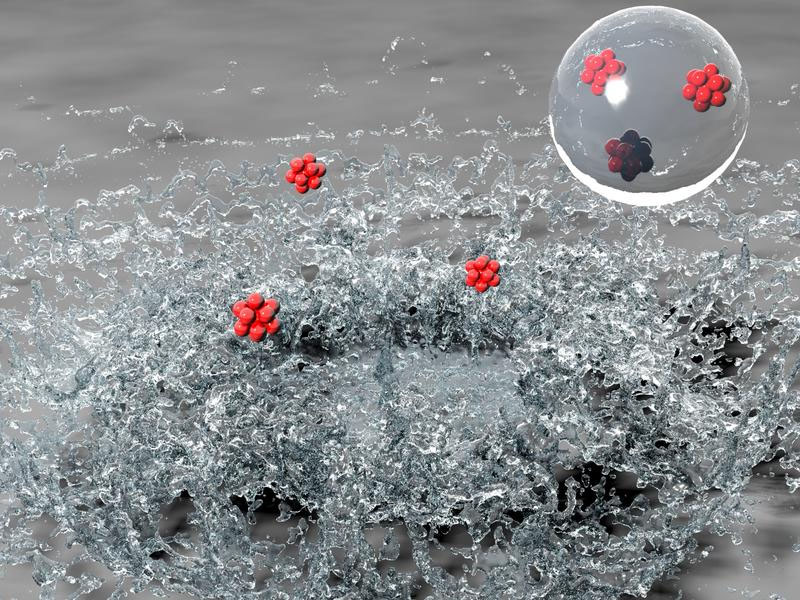| Dec 27, 2021 |
|
(Nanowerk News) While working with helium nanodroplets, scientists at the University of Innsbruck, Austria, have come across a surprising phenomenon: When the ultracold droplets hit a hard surface, they behave like drops of water. Ions with which they were previously doped thus remain protected on impact and are not neutralized.
|
|
At the Department of Ion Physics and Applied Physics of the University of Innsbruck, Paul Scheier’s research group has been using helium nanodroplets to study ions with methods of mass spectrometry for around 15 years.
|
|
Using a supersonic nozzle, tiny, superfluid helium nanodroplets can be produced with temperatures of less than one degree Kelvin. They can very effectively be doped with atoms and molecules. In the case of ionized droplets, the particles of interest are attached to the charges, which are then measured in the mass spectrometer.
|
 |
| Ions packed in a helium nanodroplet remain protected on impact. (Image: University of Innsbruck)
|
|
During their experiments, the scientists have now stumbled upon an interesting phenomenon that has fundamentally changed their work. “For us, this was a gamechanger,” says Fabio Zappa from the nano-bio-physics team. “Everything at our lab is now done with this newly discovered method.”
|
|
The researchers have now published the results of their studies in Physical Review Letters (“Splashing of large helium nanodroplets upon surface collisions”).
|
A surprising phenomenon
|
|
When charged particles are fired at a metal plate, the particles are normally neutralized by the many free electrons on the metal surface. They can then no longer be measured in the mass spectrometer. But when the ions are packed in a helium nanodroplet, they remain protected on impact and fly off in all directions with a few weakly bound helium atoms.
|
|
“The ions are apparently protected by the helium,” Zappa says. He doesn’t yet fully understand the underlying mechanism. “But there is some evidence that the helium loses its superfluid property before impact and then behaves like a liquid, splashing away from the surface and only then partially evaporates.”
|
|
Another possible reason could be that the first droplets evaporate at the surface, forming a layer of gas that slows down subsequent droplets and, in this way protects them from evaporation. Only further investigations will show if one of these explanations is correct or if there are other reasons.
|
|
The fact that this method also works with negative ions, which are normally very fragile, indicates to the scientists a strong effect of the previously unknown phenomenon.
|
Nanotechnology benefits
|
|
With this discovery, Paul Scheier’s team not only improved their own measurement method, but also gained important insights for other research groups that, for example, deal with the deposition of nanoparticles on surfaces.
|
|
“Metal nanoparticles are a great example of this,” Scheier recounts. “In many modern technologies, metal nanoparticles are found that have very specific properties.” The fact that the generation of such nanofilms can often be very inefficient could also be related to the phenomenon now discovered in Innsbruck.
|


